
Tasting No 263 – March 26, 2024 – Wines from Sardinia

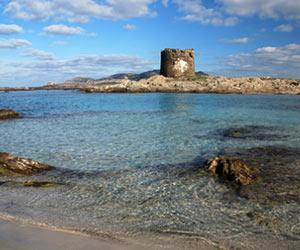
-
Tasting Overview
The main objective of this tasting is to explore wines from the Island of Sardinia, Italy
Type of tasting: Open/hybrid/blind
Presenter: Sergio Ardila
Participants:
S. Ardila; M. Averbug; L. Bocalandro; J. Brakarz; J. Entwistle; C. Estrada; J. García; N. Marzella; A and C. Perazza; J. and L. Redwood; R. Santiago; E. Silva; L. Uechi; G. Veja; and G.
Zincke.
These are the wines:
- Pala ‘Stellato Vermentino di Sardegna’, 2022
- Pala ‘Cannonau di Sardegna’ Riserva, 2020
- Cantine Argiolas ‘Turriga Isola Dei Nuraghi’, 2017
- Agricola Punica ‘Barrua Isola Dei Nuraghi’, 2019.
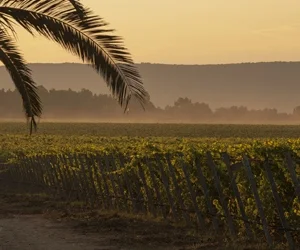
-
Menu
- Cream of asparagus
- Raviolis in cream sauce
- Grilled NY steak
- Dessert, coffee
-
Wine production in Sardinia
Sardinia, 150 miles (240km) off the west coast of mainland Italy, is the second-largest island in the Mediterranean Sea, with a total population of 1.7 million in 2020 (Italian National Institute of Statistics). Covering roughly 9300 square miles, it is almost three times the size of French-owned Corsica, its immediate neighbor to the north, and only slightly smaller than Italy’s other major island, Sicily.
Sardinia boasts a rich viticultural history with traditions distinct from the mainland. Influenced by Spanish and French viticulture practices, Sardinian wines offer a unique blend of indigenous grapes and international varieties. Blessed with a warm Mediterranean climate, diverse soils, and stunning coastal landscapes, Sardinia presents a treasure trove for wine lovers.
Over the centuries, Sardinia has belonged to various empires and kingdoms, which is reflected in its place names, architecture, languages and dialects, and its unique portfolio of wine grapes.
Since the mid-18th Century, Sardinia has been one of Italy’s five autonomous regions (the others being Sicily, Friuli-Venezia Giulia, Trentino-Alto Adige and the Aosta Valley), but its separation from the mainland has led to a culture and identity somewhat removed from the Italian mainstream. This is reflected in the Sardinian relationship with wine: it is much less culturally and historically engrained there than in the mainland regions. Wine production and consumption on any scale has developed only in the past few centuries. Viticulture is a minority enterprise in Sardinia, despite generous financial incentives from the government.
In the wine world, Sardinia is best known for red wines made from Cannonau (or Grenache) and white wines made from Vermentino, the main grape varieties produced here. The region makes twice as much red wine as white.
In terms of terroir, the combination of hills and plains, coastal regions and inland areas offers useful diversity of topography and mesoclimates. To further these benefits, the available soils and bedrocks vary from granite, limestone and sandstone to mineral-rich clays and free-draining sands and gravels.
Located between 38 and 41 degrees North, the island lies at the southern edge of European viniculture, but thanks to the cooling effects of the Mediterranean, the maritime climate here is more forgiving than in other regions at this latitude (e.g. Greece and Turkey).
Sardinia’s wine production has fluctuated considerably from year to year, and 2022 was at its 10-year average of 684,000 hl, coming off 26,700 ha (66,000 acres) of vines .
Key characteristics of Sardinian wines are:
- Powerful Reds: Cannonau leads the way with its full body, ripe fruit character, and hints of spice;
- Aromatic Whites: Vermentino shines with its crisp acidity, citrus, and floral aromas; and
- Indigenous Treasures: Nuragus, Monica, and other local grapes, which offer unique flavors.
-
The grape varietals and denominations
In terms of grape varieties, the portfolio of varieties planted in Sardinian vineyards bears little resemblance to those in any other Italian wine region. The closest mainland wine regions to Sardinia are Tuscany and Lazio, and yet the key varieties used in these two (Sangiovese, Montepulciano, Barbera, Trebbiano) are not found in the island’s vineyards.
Instead, one finds varieties of French and Spanish origin, exemplified by Grenache (called Cannonau here), Carignan (and its distinct clonal variants Bovale di Spagna and Bovale Grande) and Cabernet Sauvignon.
The most “Italian” varieties here are Malvasia and Vermentino, but even Vermentino can only just be considered Italian, being more widely planted on Corsica and southern France – often under the name Rolle – than in its homeland, Liguria. Muscat Blanc (Moscato Bianco), ubiquitous all around the Mediterranean, further contributes to the pan-Mediterranean feel of Sardinian viniculture.
Aside from the better-known grape varieties mentioned above, the island makes use of several obscure varieties, including Torbato, Semidano, Niederra, Nuragus, Monica and Nasco. The latter three are showcased in their own variety-specific DOCs, all from Cagliari.

The Italian love of complex bureaucracy is clearly visible in Sardinia, which has more DOC and IGT titles than Calabria and Basilicata combined, despite having the lowest wine production per hectare of any Italian wine region. It has one DOCG, 17 DOCs, and 15 IGPs.
The majority of Sardinian vineyards lie on the western side of the island, which is also where most of its location-specific DOCs are found. They line the west coast, running from south to north: Carignano del Sulcis, Vernaccia di Oristano, Malvasia di Bosa, and Alghero.
Even the large Cagliari DOC, which covers a good proportion of the island’s southern half, is strongly biased towards the west coast. The exception to this westerly bias is Vermentino di Gallura, the island’s only DOCG, whose catchment area covers the island’s northeastern corner.
Nevertheless, the most familiar appellations to many drinkers are likely to be the five island-wide DOCs: Cannonau di Sardegna, Vermentino di Sardegna, Monica di Sardegna, Sardegna Semidano and Moscato di Sardegna.
-
Information on the Wines
Wine #1. Pala Stellato Vermentino di Sardegna, 2022
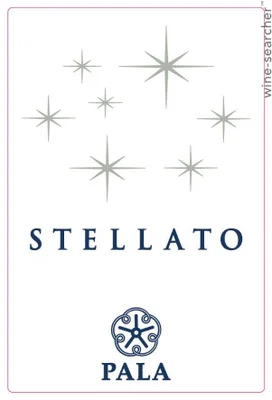 – The Producer. Azienda Agricola Pala (or Pala estate) is a well-respected producer known for its diverse range of wines, from Vermentino, Cannonau, Malvasia, Sarda, Monica and Nuragus. The winery was founded in 1950 with the first harvest done by Salvatore Pala, coming from the grapes of his own vineyards in the Serdiana countryside with the idea to make some good wine to be sold. The white wine was made from Nuragus grapes, while the red was made from Monica and Pascale grapes. Pala owns six different vineyard areas with a total of 68 hectares currently under vine. Each vineyard is planted with varietals that are chosen according to the microclimate and soil type of the individual site. Pala practices organic farming in the vineyard and does not use chemical pesticides or fertilizers.
– The Producer. Azienda Agricola Pala (or Pala estate) is a well-respected producer known for its diverse range of wines, from Vermentino, Cannonau, Malvasia, Sarda, Monica and Nuragus. The winery was founded in 1950 with the first harvest done by Salvatore Pala, coming from the grapes of his own vineyards in the Serdiana countryside with the idea to make some good wine to be sold. The white wine was made from Nuragus grapes, while the red was made from Monica and Pascale grapes. Pala owns six different vineyard areas with a total of 68 hectares currently under vine. Each vineyard is planted with varietals that are chosen according to the microclimate and soil type of the individual site. Pala practices organic farming in the vineyard and does not use chemical pesticides or fertilizers.
– The wine:
- Vintage: 2022
- Varietal: 100% Vermentino
- Vermentino di Sardegna DOC (regional)
- Sandy and clayey-calcareous rich in pebbles, medium hill, 150/180 m. above sea level
- Must obtained by the soft pressing of the grapes after a first clean and the addition of yeasts selected in our own vineyards, ferments in stainless steel vats at a controlled temperature of 12° C.
- The wine remains in contact with the fine lees for about five months, then it is bottled.
- 13.5 %
- Winemaker notes. Intense straw yellow colour with greenish tinges, brilliant. Intense, lingering aroma with vegetable and floral fragrances of maquis and summer fruits. Pleasant nose-palate harmony, warm and full of good depth and perky acidity, balanced.
- Tasting review. Spiced and tropical character with notes of ripe mangoes, peach skins, honeysuckle and hints of marzipan. Medium- to full-bodied, creamy and dense with a concentration and richness to the fruit and a chalky, slightly phenolic finish (Robert Parker’s Wine Advocate).
Wine #2. Pala ‘Cannonau Riserva di Sardegna’DOC, 2020
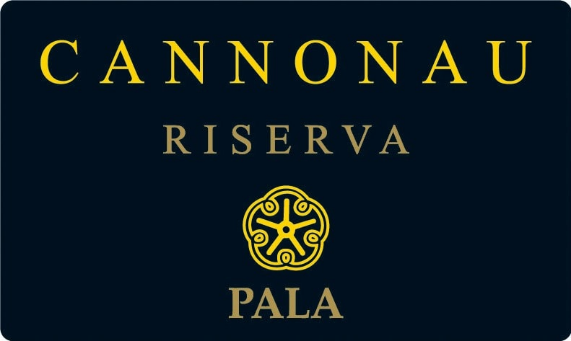 – The Wine
– The Wine
- 2020
- 100% Cannonau, single vineyard;
- Cannonau di Sardegna DOC (regional);
- Crabilis Vineyard in the hills of Serdiana;
- Manual harvesting, maceration on the skins at controlled temperature for ten days; alcoholic fermentation followed by the malolactic one.
- Refinement for twelve months in French oak barrels followed by three more months in stainless steel vats and four more months in bottle.
- 14.5%
- Pala Cannonau Riserva di Sardegna has received high ratings from critics. The wine has also won several awards, including a gold medal at the International Wine Challenge.
- Winemaker notes. Ruby red, very dark, with intense notes of red berries, blackberry and red cherry together with fine spicy notes. Elegant with smooth tannins, full-bodied and a long finish. Delicious with grilled or braised meats, spicy food, and seasoned cheeses.
- Tasting review. Wild strawberries, red plums, currants, licorice and orange peel on the nose. It’s juicy, round and spicy, with a medium body and succulent ripe red-berry fruit ( Suckling).
Wine #3. Cantine Argiolas ‘Turriga’, Isola Dei Nuraghi Rosso IGT, 2017
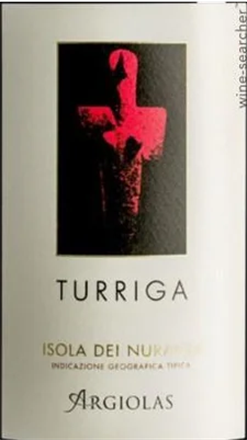 – The Producer. Cantine Argiolas is widely regarded as the foremost wine estate on the island of Sardinia. It produces a large portfolio of award-winning wines, including this powerful, tannic, herbal noted Turriga Isola dei Nuraghi IGT, based on Cannonau from the rocky vineyard of the same name. The estate was founded and planted in 1938 by Antonio Argiolas, who is considered the father of modern winemaking in Sardinia. He died in 2009 at the age of 102, giving anecdotal weight to the idea that Sardinian wine is beneficial to longevity. Argiolas covers around 280 ha. of vineyards, divided across a handful of different estates in the gently rolling land to the north and east of the city of Cagliari. A wide range of varieties are grown in these vineyards, including the traditional Cannonau, Monica, Bovale Sardo (Graciano), Carignano, Vermentino and Malvasia Bianca, as well as several international ones. The Turriga Rosso is Argiolas’ flagship red wine, made from a blend of Cannonau, Carignano, Bovale Sardo, and Malvasia Nera grapes.
– The Producer. Cantine Argiolas is widely regarded as the foremost wine estate on the island of Sardinia. It produces a large portfolio of award-winning wines, including this powerful, tannic, herbal noted Turriga Isola dei Nuraghi IGT, based on Cannonau from the rocky vineyard of the same name. The estate was founded and planted in 1938 by Antonio Argiolas, who is considered the father of modern winemaking in Sardinia. He died in 2009 at the age of 102, giving anecdotal weight to the idea that Sardinian wine is beneficial to longevity. Argiolas covers around 280 ha. of vineyards, divided across a handful of different estates in the gently rolling land to the north and east of the city of Cagliari. A wide range of varieties are grown in these vineyards, including the traditional Cannonau, Monica, Bovale Sardo (Graciano), Carignano, Vermentino and Malvasia Bianca, as well as several international ones. The Turriga Rosso is Argiolas’ flagship red wine, made from a blend of Cannonau, Carignano, Bovale Sardo, and Malvasia Nera grapes.
– The Wine.
- 2017
- Cannonau, Carignano, Bovale Sardo, Malvasia Nera;
- Isola dei Nuraghi IGT (covers the entire administrative region);
- Careful selection of the grapes. Fermentation at controlled temperature 28- 32°C. Maceration for about 16-18 days with good use of the delestage technique;
- aged for 18 to 24 months in new French oak barriques then bottle refinement for 12-14 months;
- 14-14.5%;
- Winemaker notes. The wine has a deep ruby color and a complex aroma of blackberries, cherries, spices, and tobacco. It is full-bodied and has a smooth, velvety texture. The flavors of blackberries, cherries, and spices are also present on the palate, along with hints of chocolate and vanilla. The wine has a long, lingering finish. This is a powerful and complex wine that is perfect for pairing with grilled meats, stews, and pasta dishes and aged pecorino. It is also a good wine to cellar for a few years. Best if served at 18-20o
Wine #4. Agricola Punica ‘Barrua’, Isola Dei Nuraghi IGT, 2019
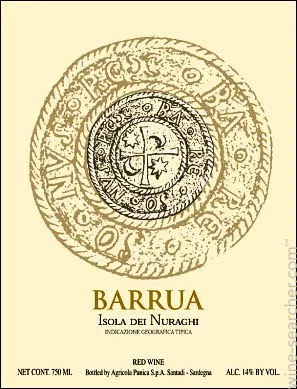 – The Producer. Agricola Punica (AgriPunica) is a joint venture between renowned Tuscan producer Tenuta San Guido (Sassicaia) and Cantina di Santadi, founded in 2002. The winery has 170 ha. in the Basso Sulcis area. Currently it produces two quality reds based on Carignano del Sulcis with exceptional results and one excellent white. The estates fall within the Carignano del Sulcis DOC. However, the wines are made under the Isola dei Nuraghi IGT rules to give more options when it comes to blending. Barrua is AgriPunica’s award winning flagship red wine.
– The Producer. Agricola Punica (AgriPunica) is a joint venture between renowned Tuscan producer Tenuta San Guido (Sassicaia) and Cantina di Santadi, founded in 2002. The winery has 170 ha. in the Basso Sulcis area. Currently it produces two quality reds based on Carignano del Sulcis with exceptional results and one excellent white. The estates fall within the Carignano del Sulcis DOC. However, the wines are made under the Isola dei Nuraghi IGT rules to give more options when it comes to blending. Barrua is AgriPunica’s award winning flagship red wine.
– The Wine
- 2019
- 85% Carignano, 10% Cabernet Sauvignon, 5% Merlot.
- Isola Dei Nuraghi IGT
- The must ferments with the skins at a temperature between 25° and 28°C in temperature-controlled stainless-steel tanks for about 15 days. Periodically pumped over to facilitate the extraction of the compounds present in the skins. Malolactic fermentation confers smoothness to the wine.
- 18 months in French oak barrels (40% new), then rests in bottle for at least 6 months.
- 14.5-15%
- 2019 AgriPunica ‘Barrua’ has received high ratings from critics, and also won several awards, including a gold medal at the Decanter World Wine Awards
Winemaker notes: the quality of the red Sulcitane grapes, not only in terms of color, but also for the smoothness of its soluble compounds – from the tannins to the consistently low and elegant acidity and the smoothness of its main components. Its polyphenolic apparel is of a distinguishably sweet, extremely delicate, round tannin weave chromatically embroidered with refined anthocyanins. Color is lively, deep ruby-red. Complex scent of ripe red fruit (mainly black cherry), spices, notes of licorice and hints of myrtle. An elegant wine that shows an impeccable workmanship, with notes of sage and myrtle with aromas of ripe red fruits and pepper in a persistent and harmonious finish. Typically, the wine combines ripe red fruit with aromas of herbs and spices.
Sources’ References:
Wine-Searcher editorial · Last updated 16-Feb-2023
https://www.pala.it/en/wines/stellato-vermentino/
https://www.pala.it/en/wines/cannonau-riserva/
https://www.uritalianwines.com/turriga-2017-P1234.htm
https://www.kobrandwineandspirits.com/product/agricola_punica_barrua_isola_dei_nuraghi_igt/
- CV Members Rating
The tasting took place before revealing their prices. 16 participants rated them from Acceptable to Exceptional. The combined results established the preference order during the tasting.
Cantine Argiolas ‘Turriga’ Isola dei Nuraghi, 2017 was rated the Best Wine. The white Pala
‘Stellato Vermentino di Sardegna’, 2022 the Best Buy.
The best buy among the reds was Pala,
‘Cannonau di Sardegna’ Riserva, 2020. The following Table presents the details of individual ratings and combined results.
.o0o.
Just for Laughs
I miss my early years so much…
Ai que saudades da minha infância

.o0o.
